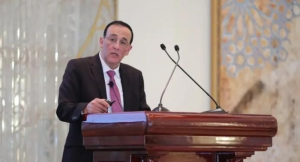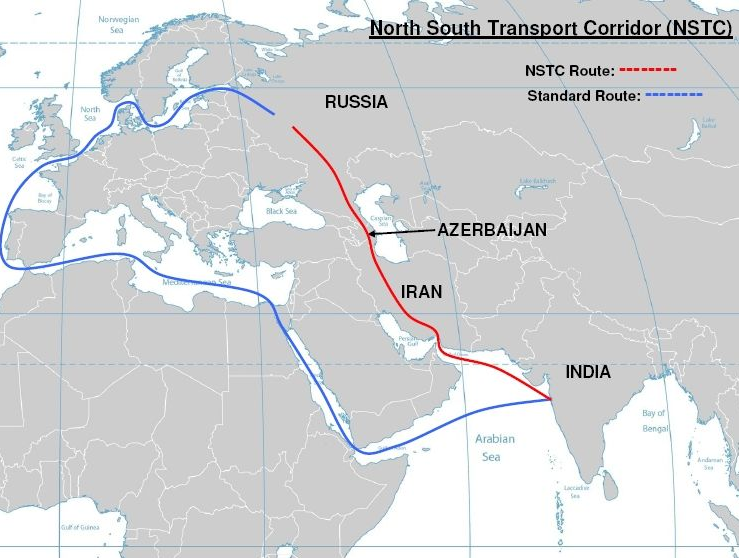India expects to consent to an arrangement with Iran on the management of the Chabahar port inside the following decade and interface it with the International North-South Transport Corridor INSTC), where Azerbaijan is a huge vehicle center. The Monetary Times reports about this.
As indicated by the distribution, Indian Minister of Ports, Transportation, and Waterways Sarbananda Sonowal will visit Iran on Monday to consent to the arrangement. This is whenever that India first has assumed control over the management of an unfamiliar port.
The new agreement will be substantial for a considerable length of time and will be consequently reestablished. Later on, it is intended to associate India to the INSTC through Chabahar port.
This shipping lane is expected for the transportation of products from India and the Persian Inlet countries through the regions of Iran, Azerbaijan, and Russia, as well as interfacing the rail lines of these three countries to Western and Northern Europe.
The principal benefit of the hall is the decrease of freight conveyance time by a few times. Chabahar port is situated in the southeast of Iran. In 2003, India and Iran consented to mutually foster the port, however the venture was subsequently retired because of international assents against Iran.
During his visit to Tehran in 2016, Indian Prime Minister Narendra Modi announced his aim to put $500 million into the development of the port framework of New Delhi.
In May 2016, India consented to a three sided arrangement with Iran and Afghanistan for the development of the Shahid Beheshti terminal at the port.
A few inquiries emerge: What is the meaning of India’s goal to consent to an arrangement with Iran in regards to the management of the Chabahar port? How does interfacing the Chabahar port with the International North-South Transport Corridor (INSTC) benefit India and different countries included? What will be the profit of Azerbaijan in this? Against the background of the place of India and Iran against Azerbaijan, in what heading could what is going on at any point change monetarily and strategically?
While addressing inquiries for Azernews, Master Neil Watson felt that this move was very critical.
“It is the primary move by a toward the west confronting country – India – to really work with Iran, which is typically viewed as an untouchable state. Besides, it signals Iranian confidence in a country that has magnificent relations with the US and is a huge constituent piece of the BRIC nations, which are molding the new world economy. It additionally demonstrates that Iran no longer believes Russia to be its rescuer and default accomplice, especially considering its continuous interruption with Ukraine and the implications of that.”
As per him, the advantages to India and different countries – both with respect to imports and commodities – are totally gigantic.
“The INSTC possesses currently limited the transportation energy for Chinese items and India and different countries included will profit from diminished transportation time and calculated economies of scale. In any case, on the other hand, it benefits India, Persian Bay countries, and Azerbaijan, as their items can be effectively be a conveyed a long ways past their conventional area, even into Europe. This comes when demand for hydrocarbons is changing and at last decreasing and the requirement for all oil-rich countries to expand their economies is squeezing.”
Watson noticed that the advantage to Azerbaijan is the capacity to import products from China, India, and different countries all the more actually, in this manner expanding the reach accessible in the country and eventually decreasing costs. Additionally, Azerbaijani products can be sent out all over effectively with upgraded strategic expenses, in this way making them serious on the world stage.
“In my view, this signals a defrost in the difficult Azerbaijani-Iranian-Indian relationship. India and Iran have been under Soviet/Russian/Armenian impact for a really long time, yet given Armenia’s loss and Russian withdrawal from the South Caucasus, it is the ideal opportunity for these countries to cooperate and firmly on a business balance. This can serve to eventually upgrade conciliatory relations,” the English master closed.
Be that as it may, Dr. Straightforward Musmar, Chief Warning Board President for the University of Maryland Worldwide Grounds, a warning part at the Abrahamic Accord Business Circle, and a Board Part at Paris Metropolitan University, featured India’s reception of a methodology likened to China’s before “pearl necklace” by putting resources into key ports overseas.
“This system will improve India’s worldwide key presence and oceanic access. India has gotten interests in ports in Iran, Sri Lanka, Myanmar, and Oman and is wanting to put resources into the Philippines. The Indian Minister of Ports, Delivery, and Waterways, Sarbananda Sonowal, and the Iranian Vehicle and Metropolitan Improvement Minister, Mehrdad Bazrpash, marked the 10-year contract. The arrangement is to interface India to the INSTC through Chabahar port, where Azerbaijan is a critical vehicle center, to lessen the freight transporting cost and conveyance time by a few times.
The unsteadiness brought about by the continuous conflict in Gaza and Houthi assaults on ships traveling the Red Ocean has put the projected India-Middle East-Europe Corridor (IMEC) on hold until additional notification. India is by all accounts rethinking its situation inside international vehicle courses in this unique circumstance. Consideration is presently turned towards an ‘old colleague’: the International North-South Vehicle Passageway (INSTC).
Among the ports that were projected to associate on the west bank of India are Mundra (Gujarat), Kandla (Gujarat), and Jawaharlal Nehru Port Trust (Navi Mumbai). In the Center East, something like five ports have been shortlisted to be associated with the Indian ports, including Fujairah, Jebel Ali, and Abu Dhabi in the UAE and Dammam and Ras Al Khair ports in Saudi Arabia. “Numerous courses are being considered to decrease the cargo load on one course tentatively. Appropriately, and assuming that the circumstance quiets down in the Center East, India could use the Chabahar port to seek after the youthful arrangement of the India-Middle East-Europe Corridor (IMEC) without requiring different ports.”
Dr. Forthcoming Musmar reviewed that the port of Chabahar is situated on the Makran shoreline of Sistan and Baluchistan Area, close to the Bay of Oman and at the mouth of the Waterway of Hormuz.
“It is the main Iranian port with direct admittance to the Indian Sea. Being near Afghanistan and the Focal Asian countries of Turkmenistan, Uzbekistan, and others, it has been named the “Brilliant Entryway” to these landlocked countries. To India, it is the ideal intend to get to business sectors in Focal Asia, Afghanistan, and Eurasia while bypassing its adversary, Pakistan.
Concerning different countries in the area, the INSTC will connect various locales and seek after the intra-provincial advancement of energy-rich countries. Its importance has developed colossally, especially after the Ukraine war. Moscow and Iran could involve the INSTC as a possibly imperative monetary break course into the bigger Asian locale to bypass Western assents denying explicit products.”
Dr. Musmar attested that the advanced India-Azerbaijan relationship is based on social and financial ties that emerged through the antiquated Silk Course.
“Azerbaijan turned out to be essential for INSTC in 2005, and its advanced rail lines and an essential seaport in Baku made ready for the Western Course of INSTC that runs west of the Caspian Ocean. The Western Course interfaces the Iranian ports of Chabahar and Bandar Abbas in the Middle Eastern Ocean to the tremendous rail route networks in Eurasia, particularly with the Baku-Tbilisi-Batumi or the Baku-Tbilisi-Kars transnational rail associations built under the Trans-Caspian International Vehicle Course, which makes the Western Passage of INSTC by means of Azerbaijan the most basic vital piece of the whole task for India.”
“India perceived Azerbaijan’s freedom in 1991, and India’s two-sided exchange with Azerbaijan has been filling consistently as of late. Concerning Iran, Iran and Azerbaijan will stop the pressures and change way of talking. The development of a freight terminal in Astara, on the Caspian Ocean close to the Azeri line, toward the finish of 2024 and the most recent improvement in the INSTC will assist with connecting the conflicts. The award is clear: an opportunity to set to the side their disparities and tone down strains to harvest geo-monetary profits,” Dr. Musmar added.



